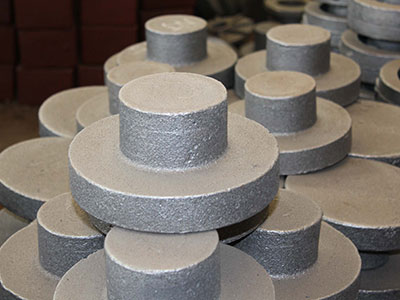Silica Sol investment Casting vs Sand Casting vs Water Glass Casting
Our foundry is located in Dongying Shandong. We can produce steel castings by the process of sand casting and Casting process, water glass casting, and silica sol precision casting processes. They are also the main process of investment casting. However, some buyers or clients are still confused about them. Or how to choose it as per their requirement.
Here, we briefly introduce their differences, advantages, and disadvantages to help you have a reference
Different 1: Concept different
What is sand casting, water glass casting, silica sol casting?
1. Sand casting process uses wet clay sand as the main molding material, which is cheap.
2. The water glass investment casting process uses water glass quartz sand as the molding material, which can stand temperature up to 1800 degrees, but it is more expensive than wet clay sand.
3. The silica sol investment casting process uses silica sol zircon sand as the molding material, which can stand temperatures up to 2000 degrees. This molding material is very expensive.
If you want to know each casting process’s details, you can check each process topic page.
WhatSand Casting is sand casting?
What is silica sol casting (Investment Casting)?
Different 2:Casting surface quality and defects
1. Sand castings will have a very rough surface, and more surface and inside defects.
The followings are some photos to show the surface quality of steel castings made by the sand casting process.
2. Water glass investment castings have much better surface smoothness, fewer surface and inside casting defects.
The followings are some photos to show the surface quality of steel castings made by this process.
3. Silica sol investment castings have very good surface quality, are very smooth, have very few surfaces, and have inside defects.
The followings are photos of the steel castings made by this process.
Different 3: Specifications on unit weight and wall thickness differences
- Sand casting process can produce very heavy and very large steel castings, but it cannot be used to produce too small, too complex or very thin wall thickness castings.
2. Investment casting can make casting smaller than 10b, while sand casting can not always make small and complex parts like investment casting.
Investment casting also has restrictions on the size and weight made in sand casting.
The following table could be a reference to tell their difference.
| Casting Process | Unit weight | size limitation | Complexity | Wall thickness |
| Sand casting | 5 – 3000kg | 0.1 – 3 meter | Not complex | >5mm |
| Water glass investment casting | 0.1 – 100kg | 0.01 – 0.5meter | Complex | >3mm |
| Silica sol investment casting | 0.1 – 100kg | 0.01 – 0.5 meter | complex | >1mm |
The following photos are showing how complex the silica sol investment castings could make.
Different 4: Casting prices
The mold material costs have caused a very big difference in their casting prices. The wet clay sand is very cheap, water glass quartz sand is expensive, and silica sol zircon sand is very expensive. The investment casting process always costs higher than sand casting for the complexity and preparation needed.
For example, the sand casting unit price is 1.5 USD/kg,
the water glass investment casting will be 2.50 USD/kg,
and the silica sol investment casting will be 6.5 USD/kg.
Different 5 : Surface Finishing.
Surface finish is another big difference between investment casting and sand casting and Water glass investment casting.
Investment casting can create finished parts showing smooth surfaces and low tolerances under the work of pattern.
After removing the sprue gate and shot blasting, the casting blank is the final part for delivery.
The water glass casting has more goof surface than sand casting
With sand casting, the mold has to be split apart to release the final product. As a result, the parting line will leave outside the finished part. And due to the rough sand, the surface of finished cast parts will be equally rough. So additional cost and time will be required in secondary machining for removing the parting line and a more smooth surface.
Different 6:Ease of design:
In investment casting, ceramic shell mold is created using liquid slurry, so parts by investment casting process can be made almost any shape, giving engineers extraordinary freedom in their designs to add intricate features and complex shapes.
For sand casting parts, to come out of the sand easily with less friction, they usually have to be tapered (with draft angles) or shaped. It’s also a challenge for sand casting to make parts with internal voids or cavities. Sand casting requires cores properly shaped and inserted in the mold to form the part’s interior. Sometimes, several cores may be needed, and it also costs time to form and secure them within each mold.

